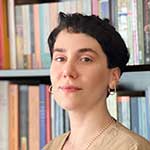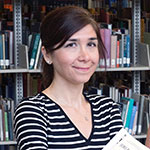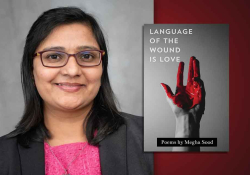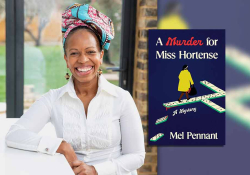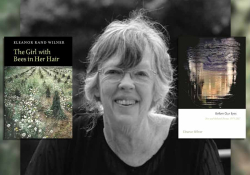Letting a Wild Ride Be a Wild Ride: A Conversation with Amy Spangler
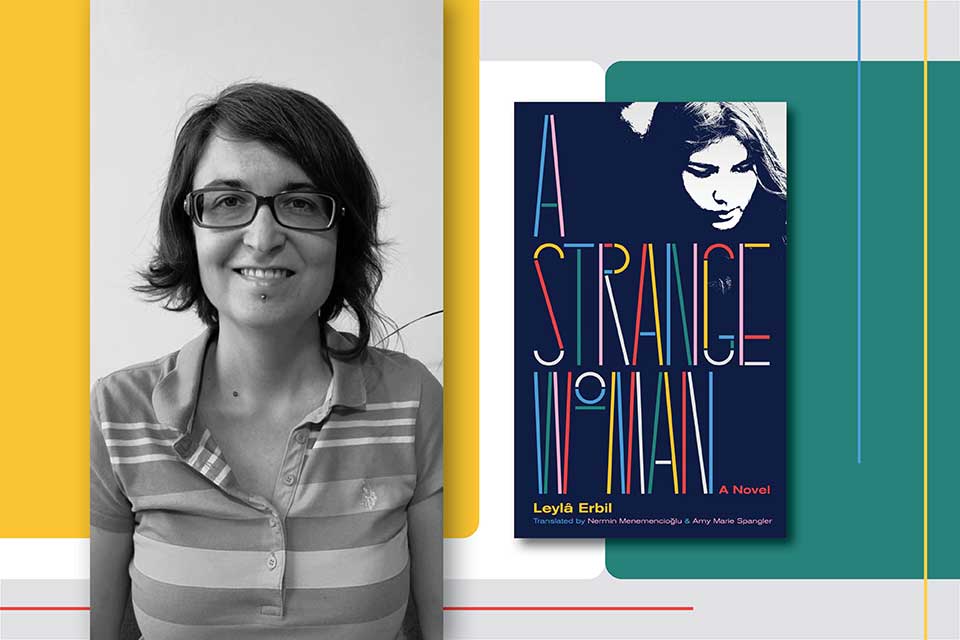 Amy Spangler is the co-translator (with Nermin Menemencioğlu) of Leylâ Erbil’s A Strange Woman (Deep Vellum, 2022). The publisher describes A Strange Woman as “the pioneering debut novel by one of Turkey’s most radical female authors [who] tells the story of an aspiring intellectual in a complex, modernizing country.” Spangler is currently working on a forthcoming title by Leylâ Erbil called Kalan (What Remains) in collaboration with Alev Ersan and Mark David Wires.
Amy Spangler is the co-translator (with Nermin Menemencioğlu) of Leylâ Erbil’s A Strange Woman (Deep Vellum, 2022). The publisher describes A Strange Woman as “the pioneering debut novel by one of Turkey’s most radical female authors [who] tells the story of an aspiring intellectual in a complex, modernizing country.” Spangler is currently working on a forthcoming title by Leylâ Erbil called Kalan (What Remains) in collaboration with Alev Ersan and Mark David Wires.
Ipek Sahinler and Iclal Vanwesenbeeck: As far as we know, you were acquaintances with Leylâ Erbil. Can you tell us how you decided to translate this specific novel by her?
Amy Spangler: My agency began representing Leylâ Erbil around 2010. So I had the pleasure and honor of knowing Leylâ Hanım for several years and visiting her many times.
My work with Leylâ Hanım was initially as a literary agent only. As such I was focusing on selling foreign rights to A Strange Woman to begin with for two reasons, really: the first was for the simple, practical reason that a complete English translation, by Nermin Menemencioğlu, already existed, which meant that foreign editors and publishers could read the book. Not to discount an earlier German translation of the book that already existed, but English is simply the lingua franca of publishing. So having an English translation is a great advantage, especially when trying to sell rights out of a language like Turkish, which few editors know and/or have readers for. So that was the practical reason. But even if we hadn’t had the translation, I do think this is the book I would have started with, because I think it is the best title to launch Erbil’s work abroad. It’s her third book—her first two being collections of short stories—and so her first novel. The title itself kind of says it all. It’s called A Strange Woman, and it’s about a strange woman, by a strange woman, we might say. The autobiographical aspects and relative accessibility—of the first and final parts of the novel at least—also make it a fine choice as an introduction to the author’s work.
So, I did not actually choose to translate the novel. The novel was already translated by Menemencioğlu in the 1970s, not long after its publication in Turkish. Menemencioğlu—an acclaimed translator from Turkish into English at the time who lived in London—had become an admirer of Erbil’s work and took it upon herself to translate the novel and submit it to publishers in London. We should remember that Erbil had not yet become the renowned literary trailblazer we know her to be today. She was certainly a known entity in Turkish literature, but this was her first novel, and—like its title and author—it was strange.
Menemencioğlu was a translator of Turkish poetry and prose. She recognized this novel as something special and took the time to translate it—literally pounding it out on her typewriter—and then to mail it to editors in London. I am still in awe that she did so, to be honest. And I wish she were still with us and could have seen her translation published, finally, so many decades later—albeit in a somewhat altered form, of course, with me as co-translator.
As I describe in greater detail in the translator’s preface to the English edition, I became co-translator because I couldn’t help but intervene more than an editor should, in an effort to better preserve what I felt were important stylistic markers that Menemencioğlu had adeptly translated but that had been translated into a more flowing and less jarring prose than I thought it should be. In light of the work that I knew came after A Strange Woman, and knowing Leylâ Hanım’s later responses to other translators of her work, I felt justified in doing the work that I did.
Sahinler and Vanwesenbeeck: What are your aesthetic, ethical, and theoretical approaches to translation? What kind of source texts are you drawn to?
I think it is the translator’s duty to try to convey the challenging nature of the source text and not pander to editors and readers looking for an easy read, or one that abides by current trends.
Spangler: I believe it behooves the translator ethically to convey the aesthetics of the source text insofar as possible. As such I don’t think the translator should attempt to make a target text more palatable for a target reader than it is in the source language. This is always dangerous in translation, because a target-text reader might mistake deliberate opaqueness for a poor translation. When working on texts by a writer like Leylâ Erbil, whose prose can be more evocative than direct, this is especially challenging. But I think it is the translator’s duty to try to convey the challenging nature of the source text and not pander to editors and readers looking for an easy read, or one that abides by current trends.
Any translation is by nature a form of domestication. But the degree of domestication is determined by the translator. In this sense, I am grateful to Deep Vellum for publishing Erbil’s work—and the work of many other challenging authors for that matter—and allowing the challenge to be preserved. I’m not sure how fruitful it would be to describe my approach in terms of domestication versus foreignization, for example, because I don’t think what flows in the source text should flow in the target text. I just don’t think a feral steed in the source text should be presented as a tamed horse in the target text. If it’s a wild ride, it should be a wild ride, not a gentle horse taking the reader on a pleasant ride in a buggy, so to speak.
I just don’t think a feral steed in the source text should be presented as a tamed horse in the target text.
Sahinler and Vanwesenbeeck: Lawrence Venuti argues that “[a] translator of French poetry into English should be not only proficient in the French language, but also learned in French literary traditions, proficient not only in the English language but also in English literary traditions, capable of imitating and assessing English poetries and knowledgeable in translation traditions both in Anglophone cultures and in the cultures, past and present, that have informed the theories and practices which constitute Anglophone traditions.” Do you agree?
Spangler: In theory, yes, I agree, a translator should aspire to be all of those things. In practice, I have to question the feasibility of this, however. To set the bar so high seems to me rather elitist. There are not enough hours in the day, days in the week, months in the year, years in a person’s life to grasp entire traditions of literature. So as an ideal, sure, but in practice, I don’t think it’s realistic. Of course, a translator should be well versed in the literatures they are translating from and into. Translators should be hungry to always learn more about them and to understand the respective traditions. But I would doubt the translator who claims to have mastered these. It’s a never-ending task. And if we waited until we had thoroughly mastered these literatures, I don’t think any of us would ever get around to translating. But we should always be learning, and eager to learn.
Sahinler and Vanwesenbeeck: You wear a few hats: translator and owner of a literary agency in Turkey that markets Turkish literature in translation. Please tell us about the interplay between these roles, especially when it comes to the selection of source texts for today's world literature market.
Spangler: My agency primarily sells Turkish rights—i.e., we represent foreign publishers and agencies and sell Turkish rights for their books into the Turkish market. The majority are from English, though we also represent books in a wide variety of other languages as well. But cultural hegemony simply dictates what sells, mostly due to its very practical reflection in the number of translators for each language pair. There are more translators from English into probably every other language than the other way around, and the lower on the rung of language hierarchy you are, the less likely you are to see your literature translated into other languages. And so it is not easy to sell Turkish literature abroad, first and foremost due to the lack of translators. Which is why we make our living primarily selling into Turkish rather than out of it.
For me, the agency’s work selling literature from Turkey abroad (I prefer to put it this way because I also represent a wonderful Armenian author from Turkey—namely, Zaven Biberian, who wrote in Western Armenian) is in many ways a labor of love. In this respect I am essentially representing work that I personally love and that I want other readers around the world to be able to know and love as well. So for me the selection is rather subjective. If I believe in the book, that it is worthy of my efforts, and the labor of the translators and editors and publishers necessary to get it out into the world, then I will represent the book and do my best to see that it makes its way into world literature, whether that takes months, years, or decades, or perhaps never comes to pass, despite my efforts.
I’ve tried in the past to represent books that should be commercially viable, even if I wasn’t completely smitten with them myself, and I have rarely had success when I did so. Therefore, this is a quest I now undertake as an idealist more than anything—a warrior, really—for the books that I love.
Sahinler and Vanwesenbeeck: In his article “Words and Worlds: Ethnography and Theories of Translation,” John Leavitt argues that in “translations into English, domestication dominates. In other words, what actually gets translated, in substance and style, tends to reinforce the hegemony of Anglo-American and, to a lesser degree, Western European culture.” Do you agree that that’s the case with Turkish texts in translation in general and A Strange Woman in particular?
Spangler: I agree that it is the case in general, but it is precisely what I endeavored not to do with the translation of A Strange Woman, insofar as possible, for reasons I described above. Erbil was an antihegemonic author, one might say, and just as she was hardly “domesticated” in Turkish, any attempt at domesticating her in English, or any other language, is nothing less than an affront to her work and to her as a person and an author.
Sahinler and Vanwesenbeeck: What are some key elements and peculiarities in Erbil’s use of the Turkish language, and how does her style differ from her contemporaries? Was there a specific part of the text that you found challenging or curious while you were (re)translating? If possible, can you give us an example?
Spangler: Erbil’s style is utterly unique to her. Her writing is like nothing that came before, and while it has certainly had an influence on the work of writers who came after her, it remains in and of itself arguably more radical than its progeny. There are the more obvious stylistic markers like her use of punctuation—she even invented her own punctuation!—and her invention of certain words, usually words that were evocative of existing words, in a way tricking the reader into thinking the word in question must be a word that exists, because it evokes a meaning and seems familiar, but alas, it is word of her own making. In the case of A Strange Woman, the greatest challenge was most certainly the entire “The Father” section, which is a kind of stream of consciousness in which the narrative is not even one stream but a kind of interplay of converging, raging rivers.
What is known as the 1950s generation in Turkey produced some truly groundbreaking literature, what we might call “modernist” in the sense that it challenged the dictates of conventional narrative. Probably closest to her in terms of just how far she sought to push the envelope was another female contemporary of Erbil: Sevim Burak. I find their texts to have a similarly mind-boggling effect. In addition to Burak, authors like Yusuf Atılgan, Vüs’at O. Bener, Oğuz Atay, Nezihe Meriç, Bilge Karasu, and Feyyaz Kayacan are part of this generation that was producing mold-breaking literature, not to mention the İkinci Yeni poets, such as Cemal Süreya, Edip Cansever, İlhan Berk, and Turgut Uyar, who were simultaneously doing the same for poetry. And I think we see the influences coursing between these two—prose and poetry—as both seek to break through the confines of what may be described as “rational” narrative, rational thinking, even, in search of something at once deeper and broader; they delve into the unconscious, which necessarily involves encounters not only with the individual but also with the collective unconscious.
Which brings me to the fact that Erbil knew her Freud and her Jung, and was very interested in how human consciousness is conveyed via language, and the ways in which consciousness challenges language, defies it even. In many ways, that was one of her favorite playgrounds in literature, and it comes across in all her work. She was a politically engaged leftist at a time when Freud was not popular with the left, and the way she explicitly drew on both psychoanalysis and Marxism was something unique at the time and criticized in certain circles.
There’s not enough space here to really get into the broad swath of literary influences on this generation. I will just say that, for myself, I found myself turning to Woolf, Faulkner, Beckett, and Joyce in particular when translating Erbil. And I will admit that it was Erbil who finally got me to read and appreciate Beckett. The more I read of each author, the more I appreciated them both.
I found myself turning to Woolf, Faulkner, Beckett, and Joyce in particular when translating Leylâ Erbil.
One simple example of a translation challenge that comes to mind is from “The Father” section, where the father refers to “davıntavna MEYZİ.” This is how the father remembers it in Turkish pronunciation, and it’s like an epiphany when one realizes what it means: “downtown Macy’s.” This is a case in which the Turkish is not obvious, so I didn’t want the English to be obvious either. But none of my suggestions for conveying this made it past the editor, so you won’t find it in the translation.
There’s so much of her style that could not be conveyed at the end of the day. Some passages seem so convoluted, yet somehow flow in the Turkish, but can’t be rendered with the same flow in English simply because of syntax. That was a huge challenge, and it remains a bit of a disappointment for me, because those passages could not be twisted and turned in the same way.
Sahinler and Vanwesenbeeck: The protagonist Nermin is a fierce, young revolutionary woman. And, as the title suggests, she is “a strange woman.” How do you perceive Nermin’s strangeness, and what do you think “strange” means in her case? We are specifically curious about the notion of strangeness or unusuality in the novel in general. Do you think the story allows us to interpret this frequently used word as a synonym for “unusual,” “odd,” or “queer”?
Spangler: Nermin is strange in the sense that she defies the conventions of her age, particularly as a woman. Strangeness permeates the entire text, especially in the second and third sections in terms of style. As a “novel,” it is also very strange, as in something we haven’t seen before. In these senses, we could also say that it is unusual and odd. “Queer,” of course, is loaded with other political connotations now. For me at least, though, “queer” is a much more encompassing term that refers to a defiant subject, one who insists on living “slant,” on “telling it slant”—shout-out to another strange woman, Emily Dickinson—who never fits in and never tries to do so. In this respect, we can say that Erbil was definitely “queer”; she had a “queer” mind that produced profoundly “queer” literature.
Sahinler and Vanwesenbeeck: Relatedly, the novel tackles the notion of “Turkish literature” as well. For instance, the following sequence is a good example of that: “I told him [Haydar] the poets I knew were either crazy or pretended to be. ‘Some of them get the disease from France, and the others are just mentally retarded,’ I scoffed. ‘You’re right!’ he agreed. Were these madmen to be the creators of Turkish literature, then, I asked. ‘Certainly,’ he said, ‘people like them and people like you.’” Where does Erbil stand, as a person who writes about “strange women” (Tuhaf Bir Kadın), or even a “strange woman” herself, via-à-vis all those “madmen who are to be the creators of Turkish literature”?
Spangler: Erbil was able to draw on Western traditions without aping them. I think what she’s referring to here is a kind of “posing,” and poets and writers who are able to convert this assumed persona into a kind of social capital. We see this in other passages of the novel, too. Just as they approach women as sexual objects to be conquered, for them literature seems to be a means to ends that actually have nothing to do with literature. For Erbil, though, literature was a lifeline, not to mention a cultural, political, and existential battleground.
For Erbil, literature was a lifeline, not to mention a cultural, political, and existential battleground.
Sahinler and Vanwesenbeeck: We’d like to hear more about your take on untranslatability. In reading this translation, we were confused about footnotes and italics. Most non-English terms are not translated, but some were explained in footnotes and some weren’t, etc. Tell us a bit about the rationale, please.
Spangler: The source text has a number of footnotes that are preserved in the English. Only a few were added and noted as translators’ notes (“t.n.”). It’s a huge question, of course, where to add notes and where not to. It’s a mystery, really, why Leylâ Hanım added notes where she did, yet didn’t add notes in a thousand different places where the Turkish reader, too, might have welcomed the immediate elucidation. Most of the terms she does footnote are regionally used words that the reader may not be able to figure out at all otherwise. But there are others that she chooses not to footnote. (What can I say—it’s strange!) After all, so many of the references are, in varying degrees, unfamiliar to the Turkish reader as well.
So, where do you start? I thought about this a lot (for example, while reading an edition of James Joyce’s Dubliners, which has hundreds of endnotes—and it’s not even a translation). Such an abundance of footnotes or endnotes is great for a critical edition, perhaps, but I think it actually takes away from the reading experience in the end. Also, one of the great joys of engaging with Erbil’s literature is that it sends you off in a million directions of exploration. She’s an author who can really make the reader work, if they want to. I wanted to leave it up to the reader, for the most part, how much they wished to delve into the references. As for foreign words, if you could easily find a definition in an online dictionary (such as kemençe), I/we just left it.
Sahinler and Vanwesenbeeck: You have quite a few co-translations. In the case of Erbil’s work, A Strange Woman and What Remains are both such projects. And yet What Remains is a co-translation of three living translators who meet up, negotiate translation, debate, etc., whereas in the case of A Strange Woman, Nermin Menemencioğlu is not alive, her translation is from the 1970s, and it is an inverse translation. Why not retranslate but use Menemencioğlu’s text? Because translation is a generational thing and her translation is, after all, from a different generation. Is it a way of honoring her, or is there something about her translation that you thought was linguistically or stylistically fundamental to the project?
Spangler: I did want to honor Menemencioğlu’s work. I didn’t think it was a translation that should be scrapped. Yes, her translation is from a different generation, but she was actually from Erbil’s generation, and I think many aspects of her translation carried over well—reflecting the generation from which the source text originates, especially in the first section.
Sahinler and Vanwesenbeeck: A Strange Woman is introduced as a feminist work of art and the writer as a trailblazer in Turkish feminism. It negotiates heteronormativity and tackles incest and rape. The wish for the death of Nermin (the mother), the dense pantheon of male thinkers from Marx to Stalin (even Suphi?) that shape Nermin’s sexuality and political identity, pose some challenges to grasping where Erbil’s feminist pen is in the novel. Could you direct us to the moments in the novel where you think her feminist writing is most evident linguistically and stylistically, please? As you respond to this question, please tell the readers about how gender works in the Turkish language.
Spangler: I should preface this by saying that Erbil never described herself as a feminist, although she knew that feminists in Turkey certainly admired and drew inspiration from her work, and that they indeed described that work as feminist. To my knowledge she never disparaged the term but did not want to be pigeonholed by it.
Erbil was never interested in idealism. Her characters are always and usually quite obviously flawed. She could have depicted Nermin as a womanist sympathetic to her mother and dedicated to the feminist movement. But Nermin isn’t sympathetic to her mother. Indeed, her mother is the primary oppressive figure in her life. She is a woman who embodies patriarchal values. Perhaps she came to do so as a means of survival, but Nermin is not interested in knowing why her mother behaves the way she does. She is interested only in liberating herself from her mother, in not becoming her mother. In a psychoanalytic sense it therefore seems perfectly reasonable that she might wish for her mother’s death. Perhaps one might even say that she must kill the mother. And I think this is a struggle many women can relate to. Outside of the home, Nermin is a woman in a man’s world, trying to make her way through the minefield of a patriarchal society that objectifies her, and her female compatriots, constantly—where the most ubiquitous form of currency seems to be sexuality. Depicting this in such an honest manner is enough for me to deem the book feminist.
Not to give any spoilers, but at the end of the first section, “The Girl,” Nermin makes a decision that is at once infuriating and heartbreaking. Or it was for me at least. And then to see what has become of Nermin in the final section, “The Woman.” This is a woman who makes what she believes to be strategic decisions, I won’t say “necessary for her survival,” because they’re not. They’re concessions, really. And in that respect, in that they are far from producing an ideal feminist scenario for the female protagonist, they are certainly not feminist in the pure sense. But they are honest, and for me, that makes the work all the more feminist for this very reason.
As for the dense pantheon of male thinkers, are they not indicative of the milieu in which this character exists and has come into being? Nermin is, again, a very flawed character. The hubris underlying her misguided attempt at enlightening what she sees as an exploited underclass by moving into their own habitat—I mean, Erbil has so much fun with that, I think. It’s acerbically funny. And we’re talking about the same character who, while in a deeply unhappy marriage that she willingly succumbed to, fantasizes about amorous moments with Joseph Stalin. Erbil never presumed to present us with a feminist character, in a feminist novel, so to expect that of her would not be fair. What she did was give us a rare novel, especially for its time, featuring a female protagonist trying to navigate patriarchal Turkish society; a novel that did not shy away from sexuality and its role as a currency in that society, including in literary circles; and as such it is most certainly a work of interest to feminists and readers interested in feminism, and it has always been a work of great importance to feminists in Turkey.
Erbil’s absolute refusal to comply with the norms of writing is in and of itself a form of rebellion. Should the fact that the person behind these acts of treason toward conventional literary dictates is female mean that this rebellion is a feminist rebellion? For me, yes. The fact that in such a male-dominated literary milieu Erbil proved to be arguably the most experimental, norm-defying of them all, perhaps because she felt the shackles of convention most intensely, has been empowering for writers but also for readers like myself, who feel themselves to be “strange”—dare I say “queer”—yet refuse to believe that they are wrong.
Sahinler and Vanwesenbeeck: We heard that you’re working on the translation of another Erbil novel: What Remains (Kalan). How is it going, and when will it be published?
Spangler: Yes, and this time I am not working with one but two other translators, Mark David Wyers and Alev Ersan. We began working on the translation a full decade ago, when Erbil was one of the authors we decided to focus on at the annual Cunda Workshop for the Translation of Turkish Literature (which, sadly, is no longer happening). We worked on it off and on over the years and have been working on it quite intensively now for the last two years. Each of us translates certain sections, then the other two write their notes in response, the original translator responds to the notes, and then the three of us meet and read over it aloud to make our final decisions. Leylâ Hanım herself made her final decisions based on sound—reading the text over, and having it read to her, over and over again—so we are trying to honor her process and reflect this aspect of the text by doing the same. We’re nearly done and expect to turn in the translation this summer, and it should be published by Deep Vellum in 2024 or 2025. I have a lot to say about that book, which perhaps can be the subject of another interview in a couple of years!
Amy Marie Spangler is a graduate of Bryn Mawr College, with degrees in Near Eastern and classical archaeology and German language and literature. She is co-founder of AnatoliaLit Agency based in Istanbul, where she represents authors mostly from Turkey. A translator, primarily from Turkish into English, her published translations include Noontime in Yenişehir, by Sevgi Soysal (Milet, 2014); Dawn, by Selahattin Demirtaş (co-translated with Kate Ferguson, Hogarth, 2019); and A Strange Woman, by Leylâ Erbil (co-translated with Nermin Menemencioğlu, Deep Vellum, 2022). She is currently working on the English translation of Leylâ Erbil’s Kalan (What Remains, forthcoming from Deep Vellum) in collaboration with Alev Ersan and Mark David Wyers.
